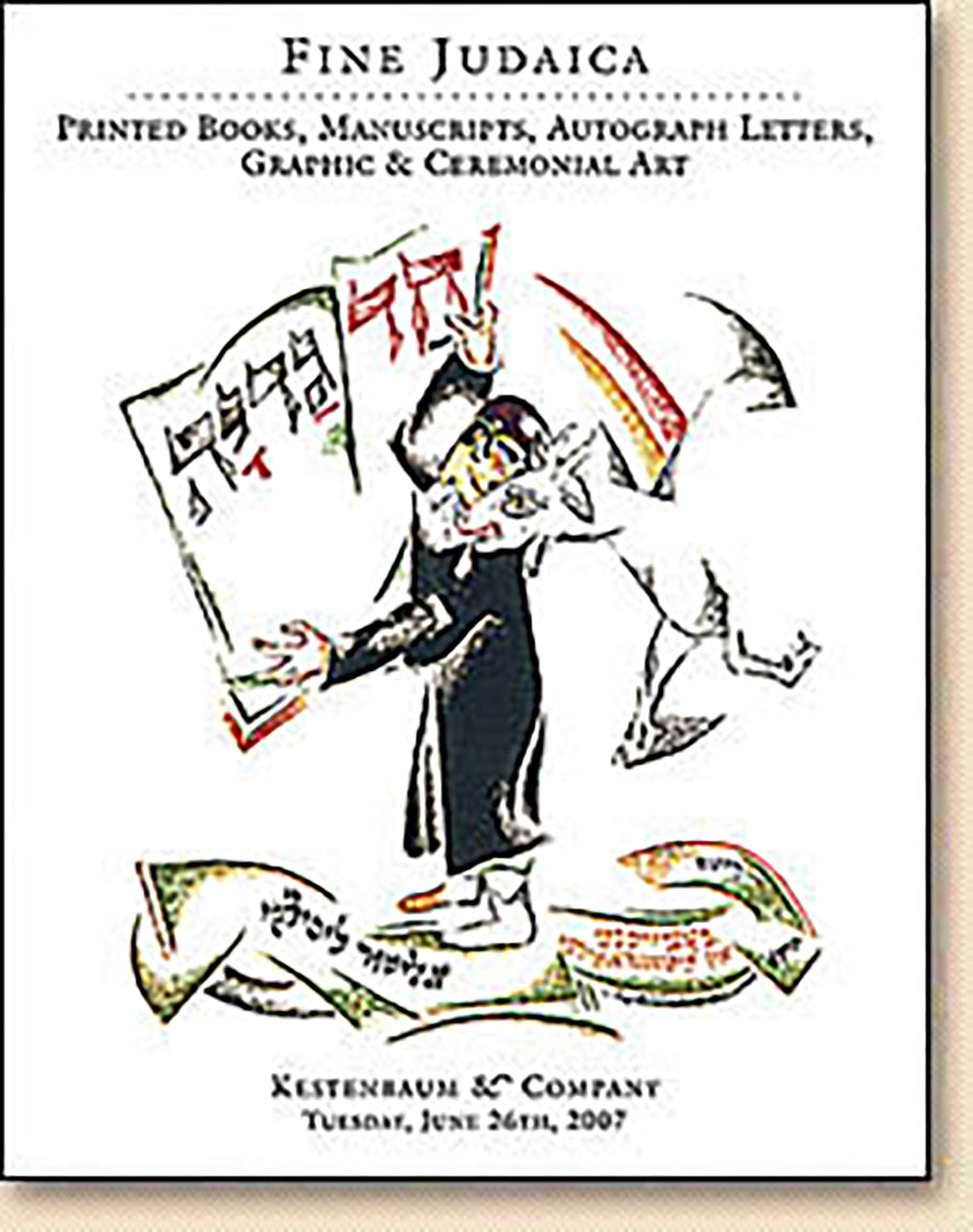Hartal, P[aul] Z[ev]. Ramat ha-Golan [“The Golan Heights”]

AUCTION 37 |
Tuesday, June 26th,
2007 at 1:00
Fine Judaica: Printed Books, Manuscripts, Autograph Letters, Graphic & Ceremonial Art
Lot 228
(ISRAEL, STATE OF).
Hartal, P[aul] Z[ev]. Ramat ha-Golan [“The Golan Heights”]
Israel: 1967-68
Est: $5,000 - $7,000
This extensive unpublished manuscript is a comprehensive history of the Golan Heights. It serves as both a valuable guide to the locales of the Golan, discussing in great depth the history and archeology of the region, as well as a memoir of the pitched battles between the Israel Defense Forces and the Syrian Army in June of 1967, in which the author of this exhaustive study, Paul Z. Hartal fought. In terms of topography, the Golan Heights is unlike the rest of the Land of Israel, on account of several (inactive) volcanoes to be found there, symbolic, as the author notes, of the volatile history of the Heights.
The Golan is a plateau on the border of Israel, Lebanon, Jordan and Syria. The origin of the name "Golan" is from an ancient city mentioned in the Bible as a "City of Refuge." Eventually, the Golan became known as the name of an informal geographic region stretching from that ancient biblical site west towards the Sea of Galilee.
Before the Six-Day War, the strategic heights of the Golan, which are approximately 3,000 feet above the bordering areas in Israel, were used to frequently bombard civilian Israeli farming communities far below them. During the Six-Day War of 1967, Syria's shelling greatly intensified and the Israeli army captured the Golan Heights on 9-10 June. The area which came under Israeli control as a result of the war is two geologically distinct areas: the Golan Heights proper (413 sq mi) and the slopes of the Mt. Hermon range (39 sq mi). Israel began settling the Golan almost immediately following the war. Kibbutz Merom Golan was founded in July 1967. By 1970 there were 12 Jewish settlements on the Golan and in 2004 there were 34 settlements populated by around 18,000 people. Today the Golan is firmly under Israeli control as part of the Jewish state.
Paul Z. Hartal (b. Szeged, Hungary, 1936), lived in Israel from 1957 to 1973, where he worked as an urban and regional planner. Settling in Montreal in 1973, he has since achieved renown as a painter and is credited as the originator of the art trend of Lyrical Conceptualism (Lyco Art).
